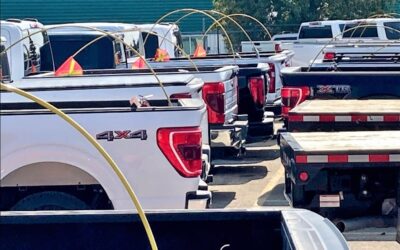Lean Construction
There are so many moving parts in the construction industry—even experts expect delays and complexities from time to time. To improve how these projects run, project managers are embracing lean construction. Lean construction is changing the way time and resources are handled in the industry, which is adding value for clients and construction teams. Let’s dive into the details.
What is Lean Construction?
Lean construction is a management approach to project delivery that seeks to maximize value and minimize waste throughout the construction process. This philosophy is rooted in principles adapted from lean manufacturing, which originated in the automotive industry and was popularized by Toyota.
In the mid-20th century, Toyota revolutionized manufacturing by introducing concepts such as just-in-time production, where materials are ordered and delivered only as needed. They also focus on eliminating waste throughout the production process. These principles of lean thinking have since been applied to the construction industry to help overcome project delays, cost overruns, and other inefficiencies.
Primary Goal of Lean Construction
Essentially, lean construction aims to reduce in a way that translates into tangible benefits for the customer. While emphasizing collaboration, productivity, and continuous improvement, lean construction maximizes the value for the customer by minimizing inefficiencies and eliminating unnecessary activities.
The lean construction method recognizes that waste can come in many forms on construction projects. From delays to excess materials, construction often overproduces and fails to optimize the resources and time they have. By identifying and eliminating these wasteful elements, the lean construction methodology seeks to optimize the entire process and, ultimately, deliver a product that better aligns with the customer’s needs and expectations. Doing so involves creating a value-driven construction experience, where businesses streamline workflows and better collaborate with project stakeholders.
What are the Principles of Lean Construction?
When guided by lean principles, the construction project becomes a holistic endeavor, where all stakeholders function as an integrated team. This approach encourages participants to extend their focus beyond immediate tasks and instead consider the entire life cycle of the project in decision-making processes. Lean construction introduces a more dynamic and interconnected perspective, reshaping how projects are conceived and executed. Here is a closer look at some of the defining principles.
Define Value Stream
First, businesses have to take a deep dive into procedures and how they add worth to customers. The value stream is the sequence of activities required to design, produce, and deliver a product for the customer. In the case of lean construction, it’s essential to define and understand the merit of each step of your process. Analyzing the value stream is a core aspect of creating greater value for the customer.
Lean construction begins with a meticulous examination and understanding of the entire value stream. This involves mapping out every step in the lean construction process, from initial design through project completion. By distinguishing activities that directly contribute to customer value from those that do not, construction teams can focus efforts on optimizing the value-adding steps and eliminating or minimizing non-value-adding ones.
The process of lean construction helps businesses focus on what matters not only to their procedures but what matters to the customer. This may affect how they allocate resources or what they prioritize.
Eliminate Waste
As briefly discussed, reducing waste and breaking processes down to the essentials is a huge element of lean construction. In this context, waste refers to any activity or process that does not directly contribute to creating value for the customer. This can involve wasting literal resources or wasting time on ineffective practices.
Common types of waste in lean construction include overproduction, excess inventory, waiting times, unnecessary transportation, and defects. Let’s take a closer look at these waste categories.
- Defects: Defects manifest in lean construction when tasks are not executed correctly on the first attempt, leading to the need for rework. This not only consumes valuable time but also results in the wastage of materials.
- Overproduction: Overproduction occurs when tasks are completed ahead of schedule or before the subsequent task can commence, introducing inefficiencies and disrupting the intended workflow.
- Waiting: The concept of “waiting” arises when workers are ready, but crucial materials have not been delivered, or prerequisite tasks remain incomplete. This often causes downtime and resource idleness, which works against lean construction methods.
- Not Utilizing Talent: The failure to match skilled workers with suitable tasks results in the underutilization of talent, skills, and knowledge, squandering valuable resources that could contribute to enhanced project outcomes.
- Transport: Transport waste occurs when materials, equipment, or workers are moved to a job site prematurely before they are needed. This unnecessary movement can lead to logistical inefficiencies, something that lean construction rejects.
- Inventory: Excess inventory refers to materials that are not immediately required. This usually results in materials that tie up a budget, require storage, and often degrade over time when not utilized promptly.
- Motion: Unnecessary movement, such as excessive distances between workers, tools, and materials, contributes to the waste of motion. In lean construction, this can be mitigated by optimizing the layout and organization of the work environment.
- Over-processing: Over-processing occurs when features or activities without value to the client are added. Ironically, this can happen in the pursuit of eliminating other types of waste, introducing unnecessary complexity and resource expenditure.
By systematically reducing or eliminating these wasteful elements, lean construction aims to streamline processes and ultimately deliver a higher quality product on time and within budget.
Flow of Work Process
Once you understand the value of every step of your lean construction process, you want to optimize the workflow itself. The flow of the work process involves organizing and optimizing the sequence of activities to ensure a smooth, continuous flow of work from start to finish.
Rather than a fragmented or disjointed series of tasks that are haphazardly completed, lean construction seeks to establish a seamless flow of work. This principle encourages the elimination of bottlenecks and interruptions, allowing work to progress steadily and efficiently. A well-managed flow reduces idle time, minimizes delays, and enhances overall project predictability. By maintaining a steady flow, project teams can address issues promptly and maintain momentum throughout the lean construction process.
Pull Planning and Scheduling
Instead of reacting to construction challenges as they crop up, lean construction encourages businesses to think in the long term and plan for the entire life cycle of the construction project. A great strategy for planning ahead is pull planning. Pull planning is a collaborative approach to project scheduling that involves the entire project team in the planning process to create a realistic and dynamic schedule.
Traditional project management often relies on push planning, where schedules are imposed from the top down. In contrast, pull planning involves the project team actively participating in the scheduling process. This collaboration ensures that tasks are scheduled based on actual needs and progress rather than predefined timelines. Pull planning enhances communication, fosters collaboration, and allows for real-time adjustments, contributing to a more responsive and efficient lean construction process.
Continuous Improvement
When you strip it down to its roots, lean construction is centered around continually improving the construction process. This can involve big, project-wide changes, but it can also be small incremental changes. Lean construction is also about culture—teams are encouraged to regularly assess their processes, identify areas for improvement, and embrace changes that move the needle. A perfect project isn’t realistic, but a perfect effort where everyone is proactive about their processes does help add value for everyone involved.
Summit Fleet Knows Construction
The power of lean construction lies in its ability to minimize waste, maximize efficiency, and enhance overall project performance. Construction experts can lead their industry into the modern age of innovation and efficiency by adopting lean construction methods and embracing continuous improvement.
Lean construction also demands high-quality resources and business partners to maximize productivity. Summit Fleet is a construction industry expert with years of experience in providing rental trucks for construction companies. If you’re looking for reliable work trucks that won’t ever slow your construction projects down, we’re the partner for you. Learn more about Summit Fleet construction rental today!






